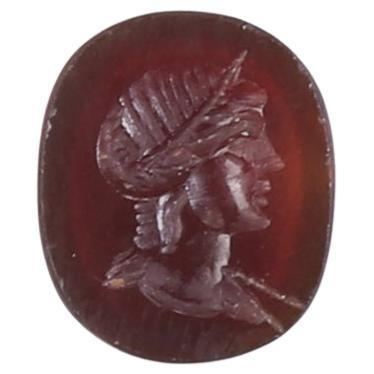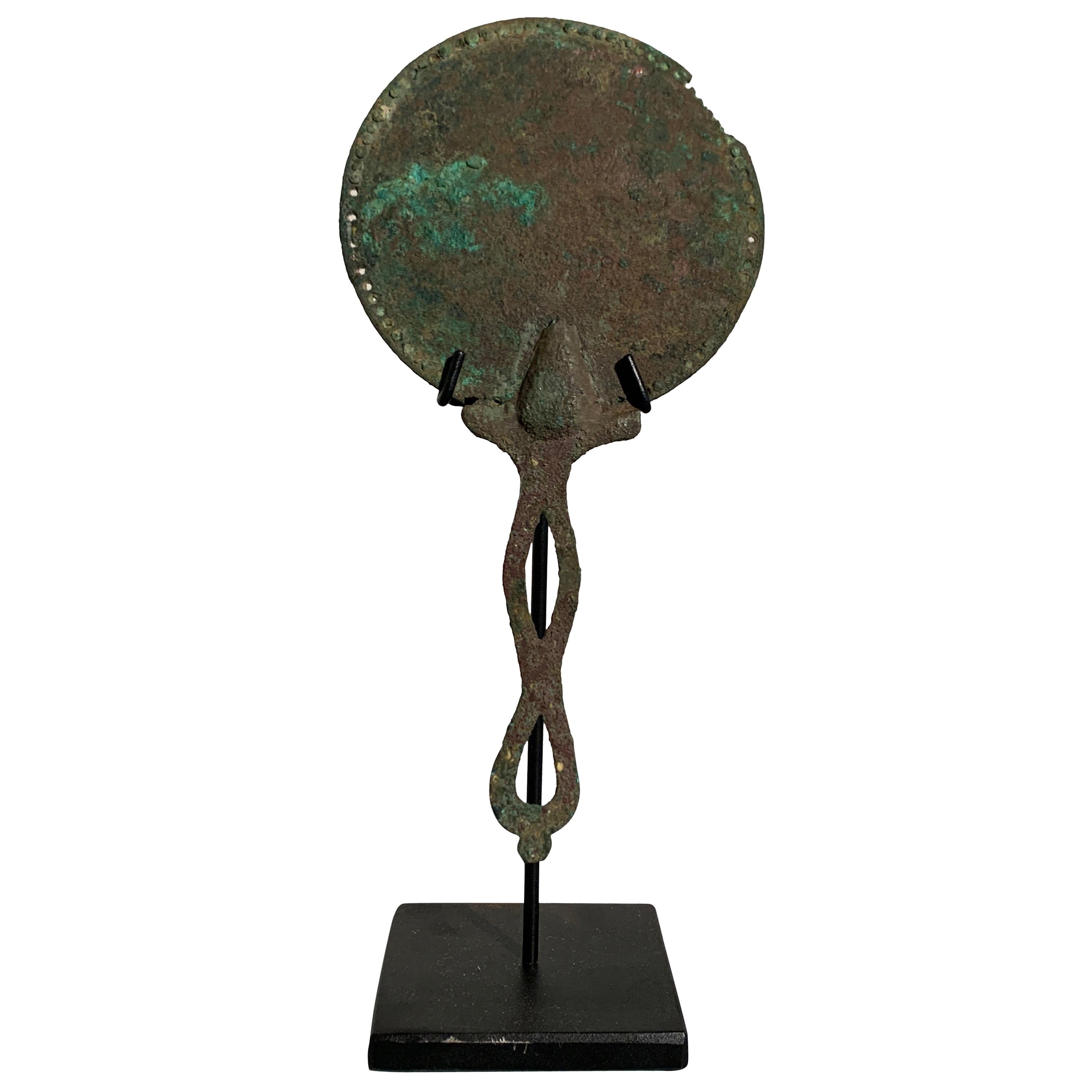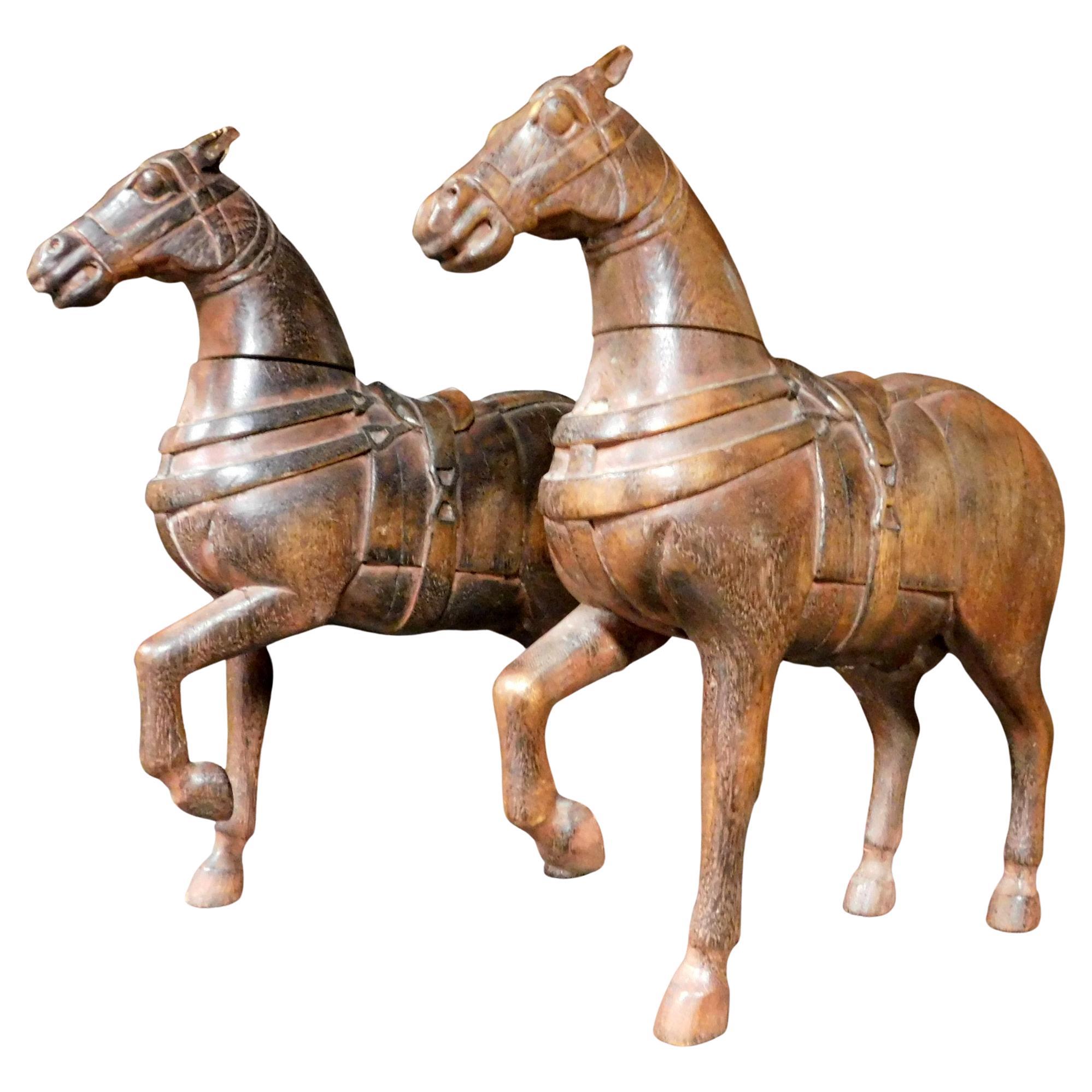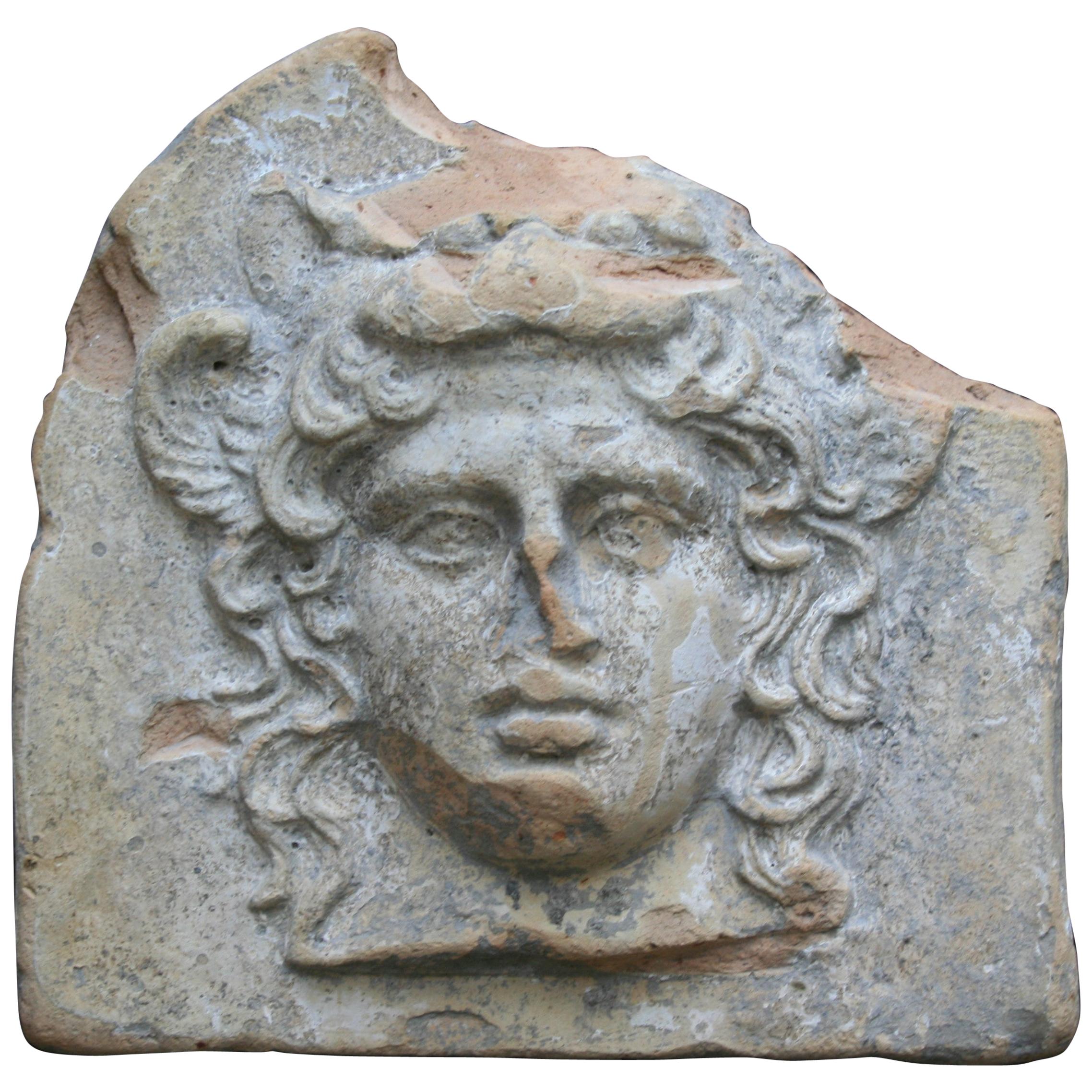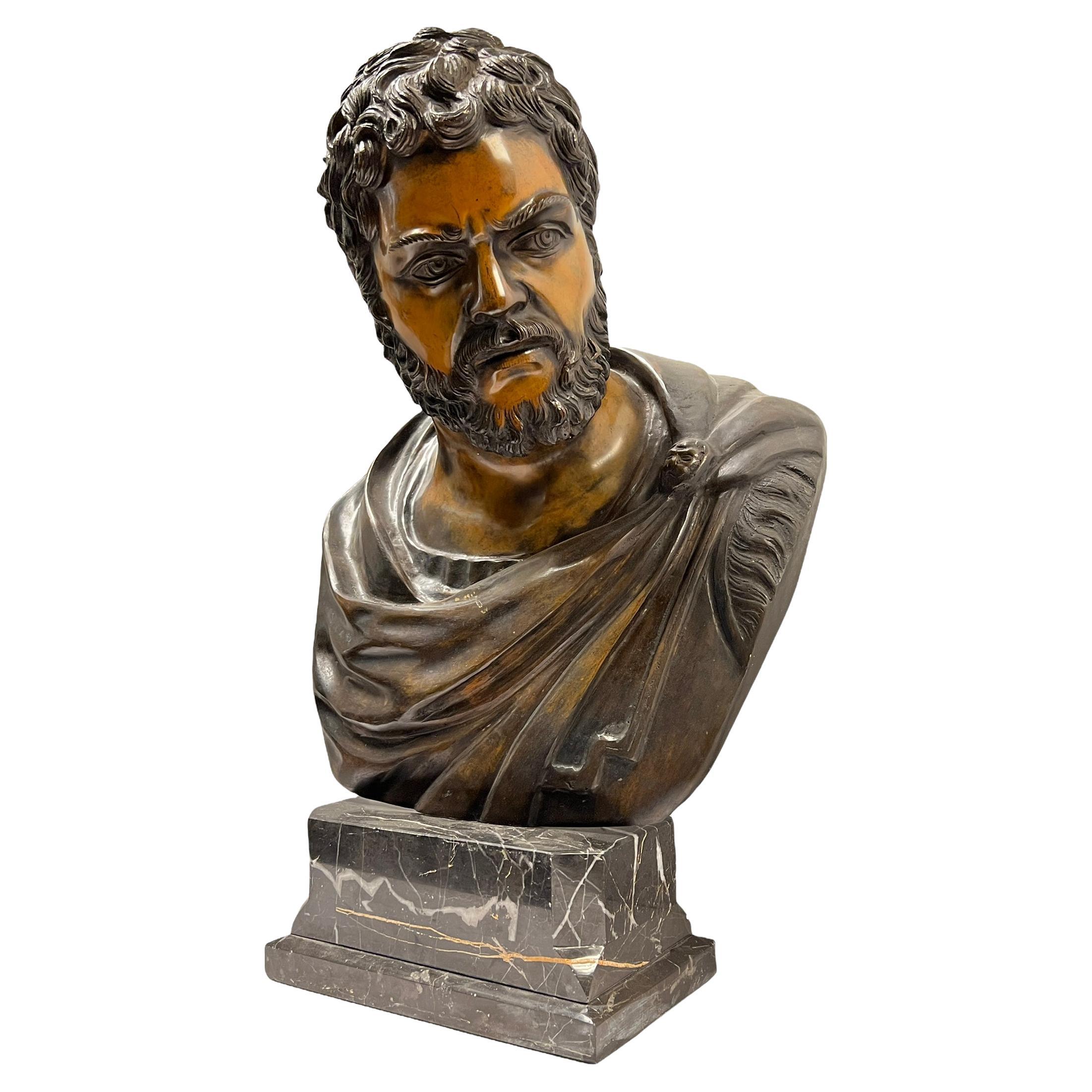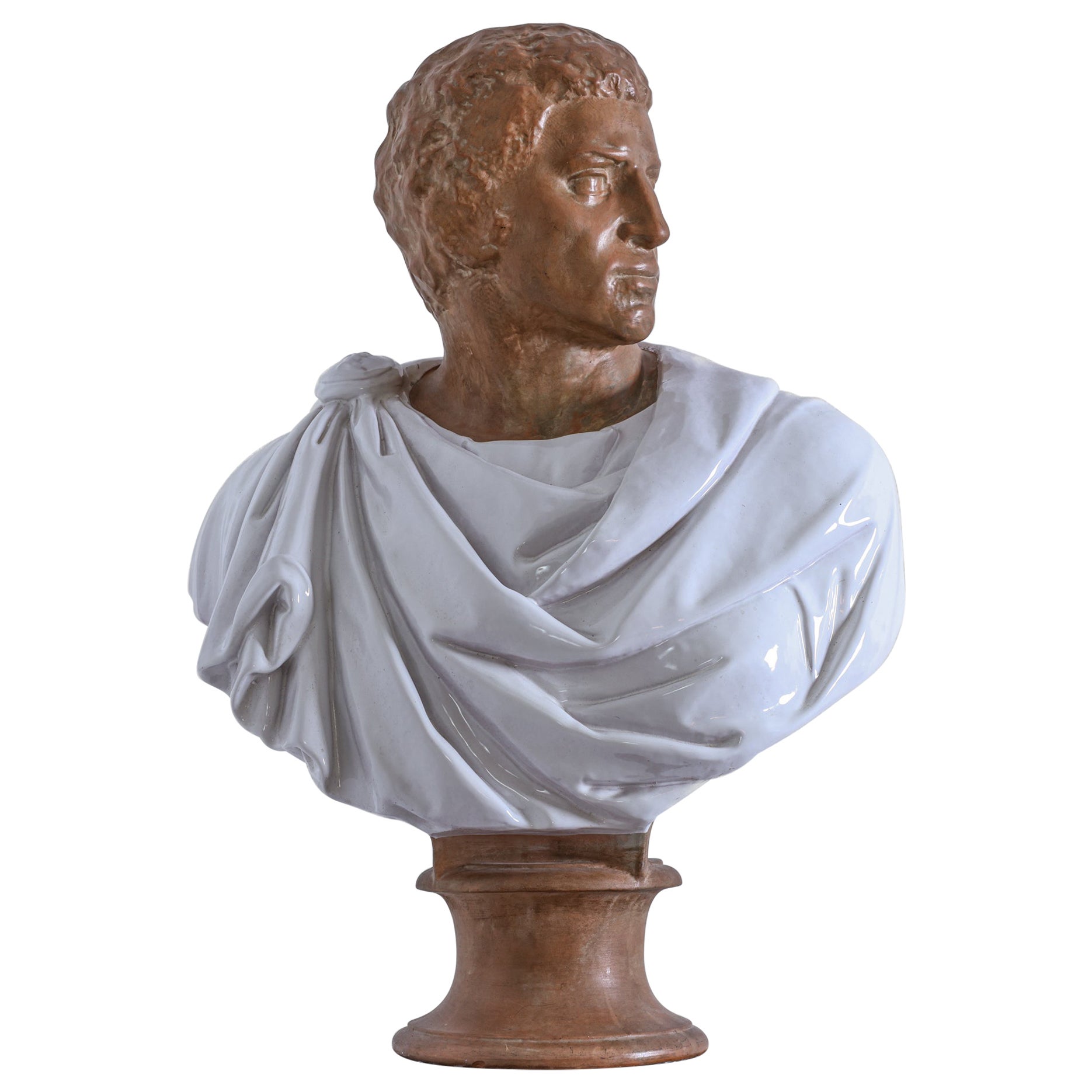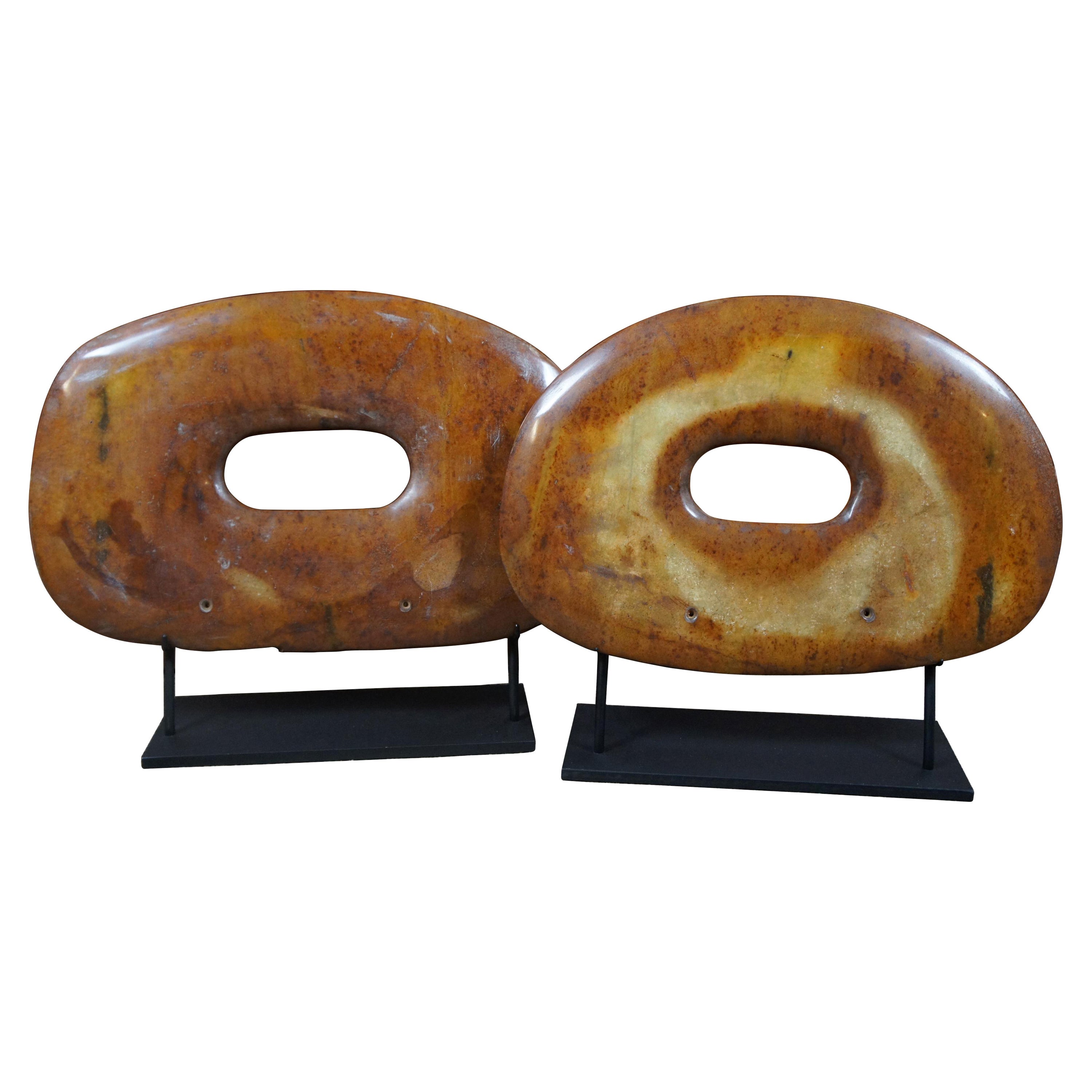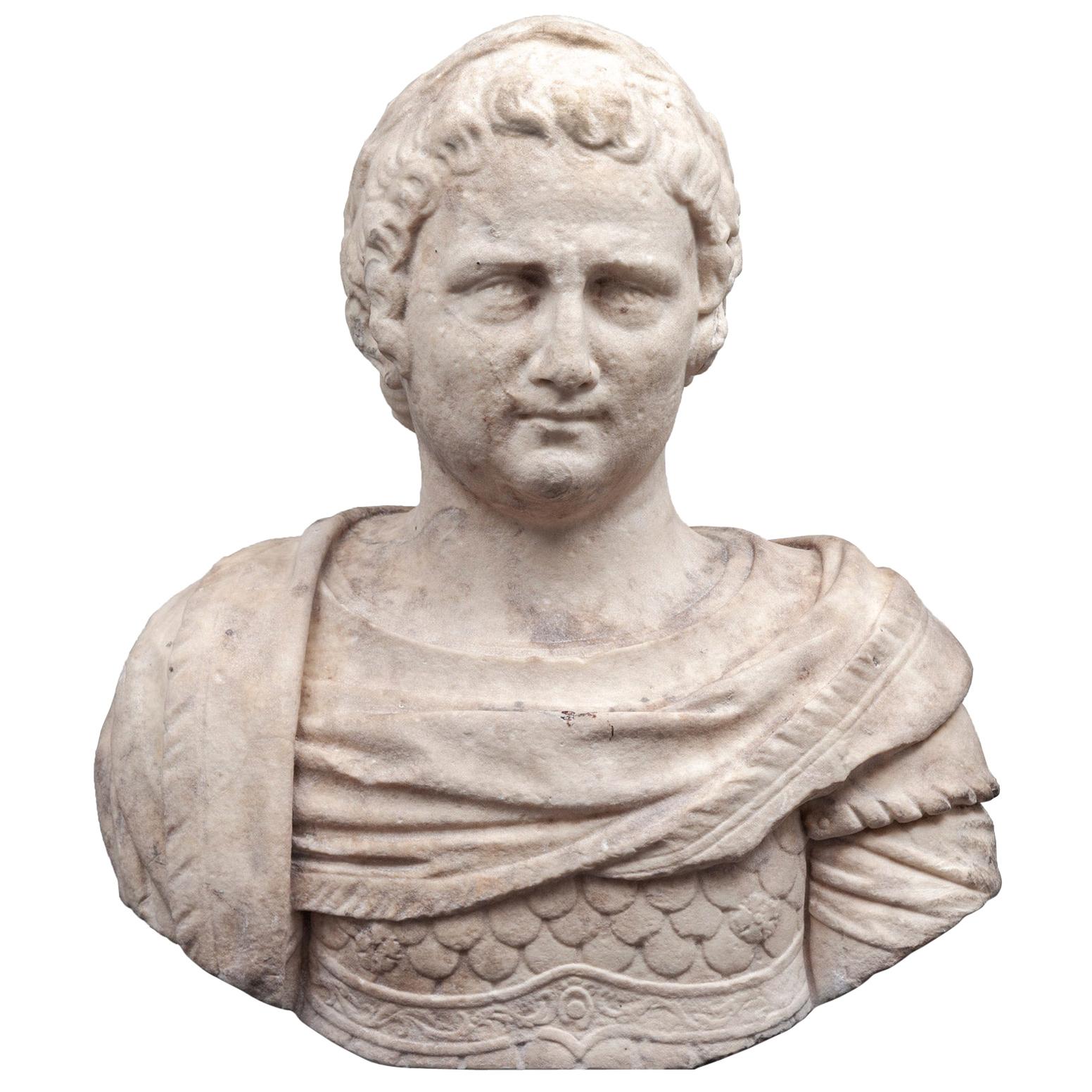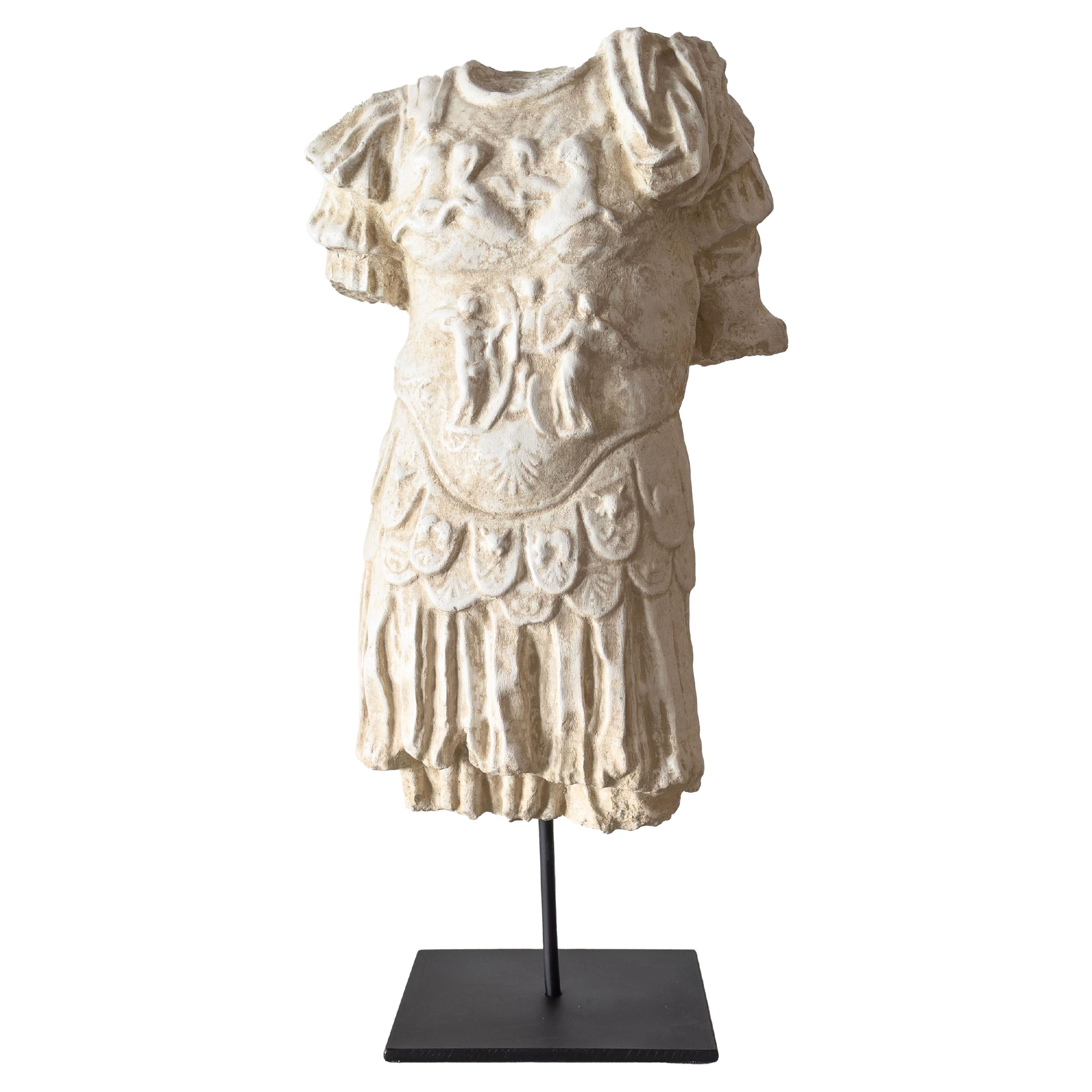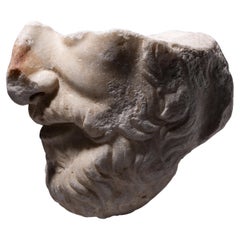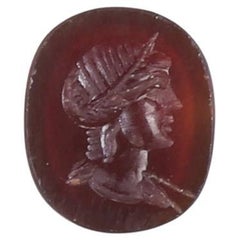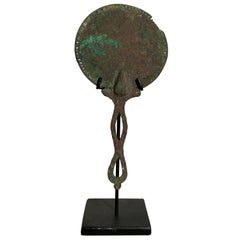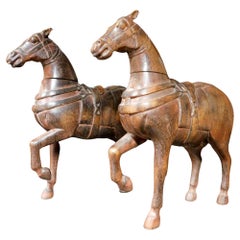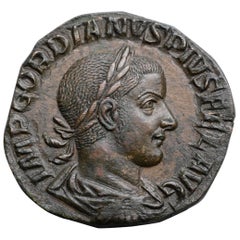
Ancient Roman Sestertius Coin of Emperor Gordian III, 241 AD
View Similar Items
Want more images or videos?
Request additional images or videos from the seller
1 of 4
Ancient Roman Sestertius Coin of Emperor Gordian III, 241 AD
About the Item
- Dimensions:Height: 1.19 in (3 cm)Diameter: 1.19 in (3 cm)
- Style:Classical Roman (Of the Period)
- Materials and Techniques:
- Period:
- Date of Manufacture:241 AD
- Condition:
- Seller Location:London, GB
- Reference Number:1stDibs: LU105229256343
About the Seller
5.0
Recognized Seller
These prestigious sellers are industry leaders and represent the highest echelon for item quality and design.
Established in 2008
1stDibs seller since 2014
100 sales on 1stDibs
Typical response time: 7 hours
Associations
LAPADA - The Association of Arts & Antiques DealersInternational Confederation of Art and Antique Dealers' AssociationsThe British Antique Dealers' Association
More From This SellerView All
- Ancient Silver Celtic Tetradrachm CoinLocated in London, GBCeltic ‘Dachreiter’ Tetradrachm Minted in Eastern Europe, circa 1st-2nd Century B.C. Silver A magnificent Celtic tetradrachm of the Dachreiter (“roof-rider”) type, minted by a C...Category
Antique 15th Century and Earlier Mounted Objects
MaterialsSilver
- Roman Marble Head of SophoclesLocated in London, GBRoman Marble Head of Sophocles Circa 1st-2nd Century Marble This fine Roman marble head preserves the proper left side of the face of a middle-aged man, with broad nose, soft lips, and bearded chin. The short beard and sideburns have been finely carved with a flat chisel, to render the soft, wavy strands of hair. The cheekbone, undereye, and nasolabial folds have been delicately modelled in the marble by a skilled hand. In a letter from 1975, the former director of Ny Carlsberg Glyptotek, Copenhagen, suggested that the head could depict the Ancient Greek tragedian Sophocles. Few figures in the Classical world stand aside Sophocles (c. 496-406 BC), inarguably the best known of the Athenian tragedians, in terms of the impact his works have had on the history of art and literature. The psychological depth he achieves in the seven of the 123 of his plays that have survived to the present day - most notably the three Theban plays: Antigone, Oedipus the King, and Oedipus at Colonus - not only inspired the Athenians, among whom Sophocles was honoured as a hero long after his death, but in our own time, have provoked landmark works on phychoanalysis and literary criticism, by thinkers like René Girard and, most famously, Sigmund Freud. In its masterful treatment of the marble this fragment sensitively captures the features of one of the most important playwrights of all time. Height on stand: 7.9 inches (20 cm). Provenance: Collection of Danish sculptor Jens Adolf Jerichau...Category
Antique 15th Century and Earlier Classical Roman Busts
MaterialsMarble
- Roman Marble Statuette of JupiterLocated in London, GBRoman Marble Fragment of jupiter Circa 2nd-3rd Century A.D. Measure: Height: 19.7 cm This beautiful Roman fragmentary statuette depicts Jupiter, the king of the gods, here recognisable from his two chief attributes, the eagle with outstretched wings - according the Pseudo-Hyginus, singled out by Jupiter because ''it alone, men say, strives to fly straight into the rays of the rising sun'' - and the base of the scepter, which remains at the side of the left foot, an aspect likely borrowed from the statue of Zeus at Olympia, once one of the Seven Wonders of the World. Though much of the original piece has been lost, the subtle anatomical detail in the feet mark this out as a piece of exceptional quality, and the work of an artist of particular talent and patience - as Johann Winckelmann once said of the famous Belvedere Torso, ''if you contemplate this with a quiet eye [...] the god will at once become visible in this stone.'' This fragment once caught the eye of Henry Howard, 4th Earl of Carlisle (1694-1758), a Knight of the Garter and among the most prolific collectors of his day. The piece, acquired during his travels to Rome, was proudly displayed on an alcove of the Western Staircase of Castle Howard...Category
Antique 15th Century and Earlier Italian Classical Roman Figurative Scul...
MaterialsMarble
- Roman Portrait Bust of a Noble WomanLocated in London, GBRoman miniature bust of a noble woman, carved marble, Severan Dynasty, c. 225 A.D. Rare and particularly elegant ‘wig portrait’ of a noble woman, belonging to the early 3rd Century - a style distinctive of Severan Dynasty female portrait busts, in which part of the head has been chiselled away to allow for the addition of a separate hairpiece, in many cases from a darker material, in order to create an almost painterly effect, in the interplay of different coloured stones. The degree of naturalism and emotional depth achieved in a piece of such a small scale implies a sculptor of great talent. The subtle parting of the lips, in combination with her upturned, vacant gaze and tired eyes, conveys a pensive mood, and even a quiet melancholy. A woman strolls the town in thick wigs bought with gold, Then buys new hair to complement the old. And having bought, she doesn’t blush! Right there she buys, Before Alcides’ and the Muses’ eyes. (Ovid, Ars Amatoria, III, 161-168) The fashion of wig-wearing in this period, as well as its emulation in the wig portrait bust, is widely attributed to Julia Domna...Category
Antique 15th Century and Earlier Italian Classical Roman Busts
MaterialsMarble
- Roman Marble FootLocated in London, GBRoman marble Fragment of a Right Foot with Sandal Circa 1st - 2nd Century A.D. An evocative Roman marble fragment, preserving the front portion of an over-lifesized sandalled foot. The toes, nails, and bridge of the foot have been sensitively carved. The outer sole of the sandal remains, with delicate, pointed straps joining between the first two toes in a diamond shape. This fragment once belonged to Danish sculptor Jens Adolf Jerichau...Category
Antique 15th Century and Earlier Italian Classical Roman Figurative Scul...
MaterialsMarble
- Ancient Roman Turquoise Glass CupLocated in London, GBTurquoise glass cup Roman Empire, circa 3rd-4th century A.D. With old label reading ‘’965’’. “Pliny relates that the art of glass-making [.] was actua...Category
Antique 15th Century and Earlier Italian Classical Roman Glass
MaterialsGlass
You May Also Like
- Ancient Roman Intaglio from 1st-2nd Century AD Carved Carnelian StoneLocated in Chicago, ILAncient Roman Carnelian Intaglio. An intaglio is defined as a small Gemstone, generally semi-precious, that has been carved with images or inscriptions only on the face. This style of carving is the opposite of the cameo technique. The engraving of gemstones was a major luxury art form in the ancient world and an important one in some later periods. This particular Intaglio is Carnelian and dates from the second century AD and shows the head of a figure in profile. It is in very nice original condition and would be ideal for making into a ring. The word Intaglio comes from the Italian word intagliare, meaning “to engrave” or “cut into.” Intaglio describes the process in which an image is engraved into a stone, creating an image in the negative. When a stone carved in this way is pressed into hot wax...Category
Antique 15th Century and Earlier Italian Classical Roman Antiquities
MaterialsCarnelian, Stone
$950 Sale Price24% Off - Roman Bronze Hand Mirror with Beautiful Patina, circa 1st CenturyLocated in Austin, TXA simple and elegant Roman bronze hand mirror, late Republic Period, circa 1st century, Italy. The bronze mirror of simple form. The round face with a pierced border design. The openwork handle...Category
Antique 15th Century and Earlier Italian Classical Roman Antiquities
MaterialsBronze
- Ancient Pair of Carved Wooden Sculptures of Horses, 19th CenturyLocated in Cuneo, Italy (CN)Ancient pair of carved hardwood sculptures, depicting a pair of trotting horses, sculpted in the 19th century. They measure about W 7 x H 30 x T 30 cm.Category
Antique Early 19th Century European Animal Sculptures
MaterialsWood
- Ancient Greek Terracotta Antefix in Form of the Head of Artemis Bendis, TarantoLocated in Antwerp, BEAncient Greek mould-made terracotta antefix decorated with the female head of the Goddess Artemis Bendis. Western Greek, Italy, Taranto, early 4th century BC. Two small feathered win...Category
Antique 15th Century and Earlier Italian Classical Greek Antiquities
MaterialsCeramic
- 17th Century, Italian Ancient Carved Stone Bust of Roman EmperorLocated in IT17th century, Italian ancient carved stone bust of Roman Emperor Measures: H 33 (with base) H 28.5 (sculpture only) x 25 x 7 cm. The ancient bust, in ...Category
Antique 17th Century Italian Classical Roman Busts
MaterialsStone, Marble
- Bronze Bust of Roman EmperorLocated in New York, NYlarge and impressive mid century Italian Bronze Bust of Roman Emperor on a marble base.Category
Mid-20th Century Italian Classical Roman Busts
MaterialsMarble, Bronze
Recently Viewed
View AllMore Ways To Browse
M Coin
Roman Antique Coins
Antique Bronze Coins
Ancient Roman Hair
P Laurel
Coins Used In Ancient Rome
15th Century Coins
Bronze Augustus
Gold Ruler
Priest Bronze
P Laurel Bronze
Apollo Coin
Augustus Coin
Wedgewood Oven Retro
Silver And Turquoise Hopi Or Zini Cuff Bracelet
Bohemian Crystal And Silver Decanter Or Jug
Metal Mid Century Modern New Or Made To Order Table Lamps
Rings From The 15th Or 16th Century
